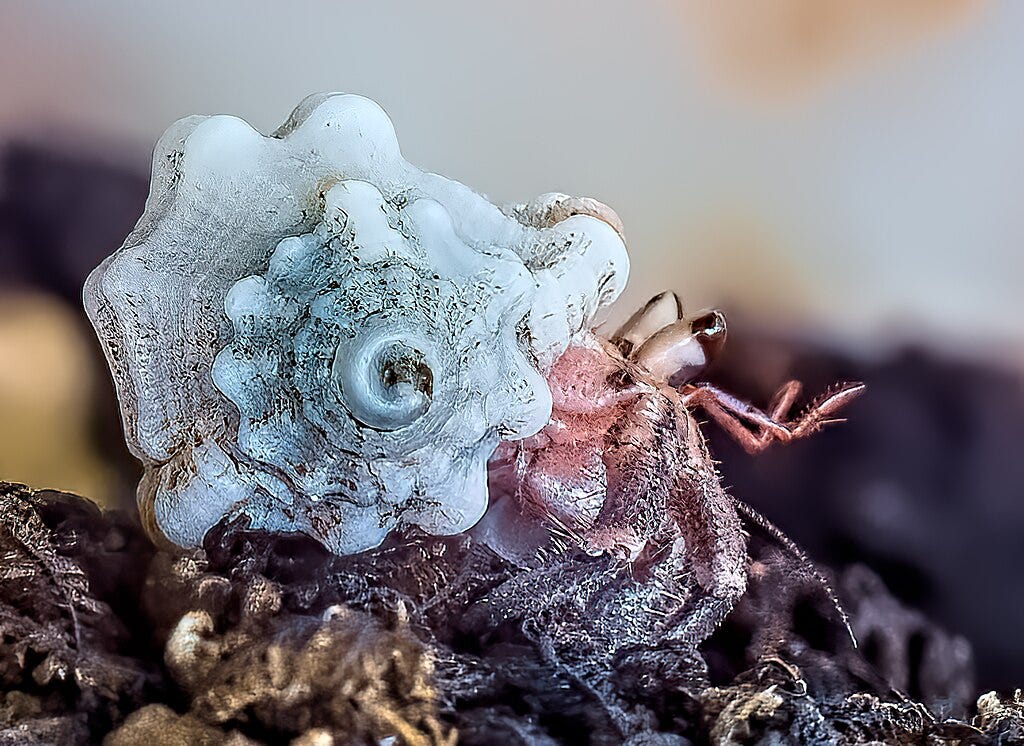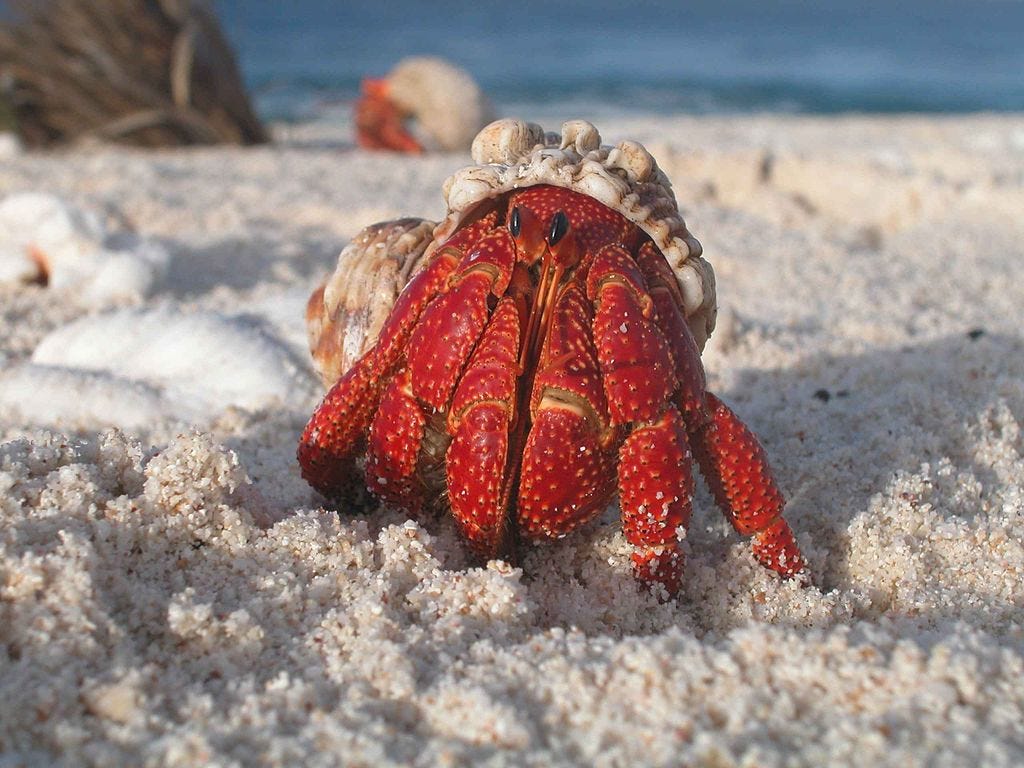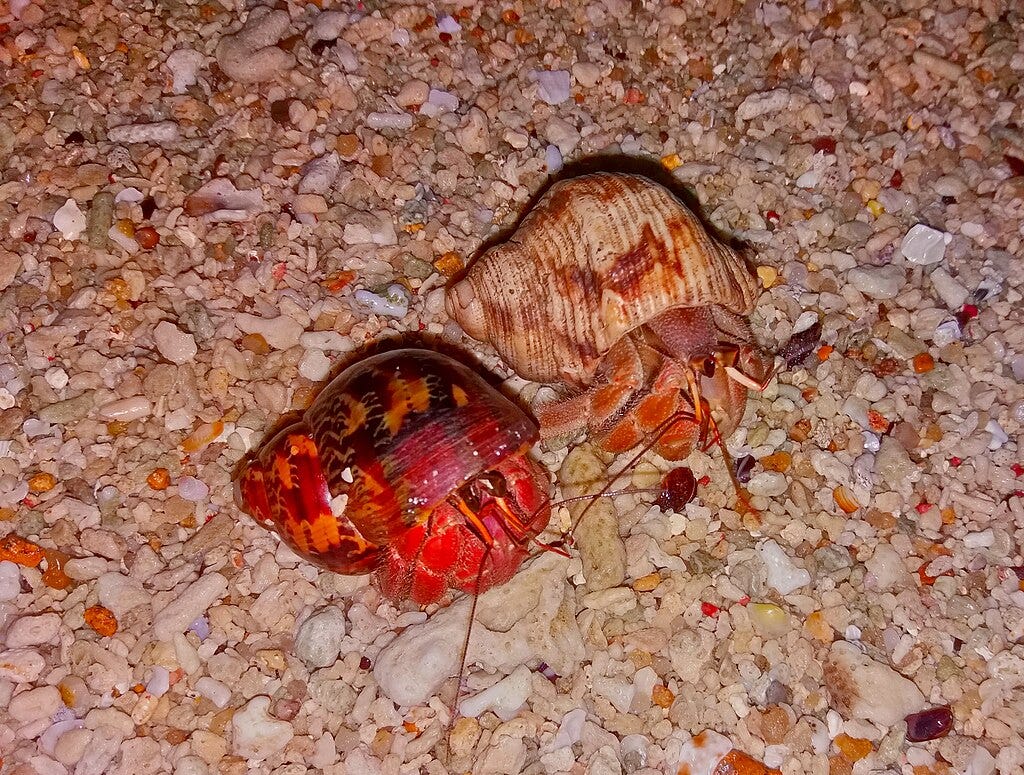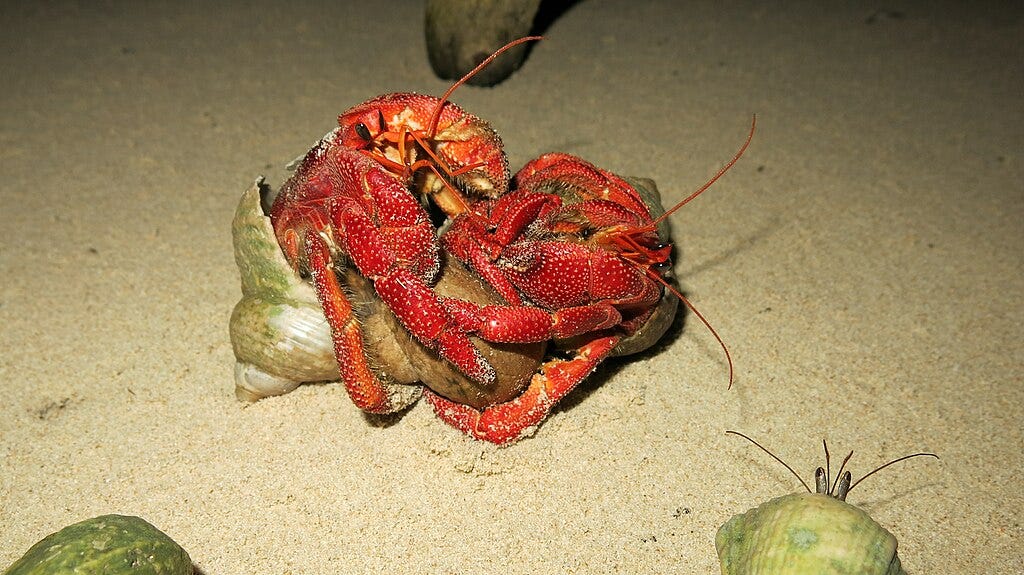A Conga Line of Crabs
Can we find real connection in the mess that is social media?
As someone who is not and has never been a journalist, who doesn’t focus on breaking news, and who is about as far from a polemicist as a person can get, writing a newsletter is a funny undertaking. I see this less as a platform for me to share my important takes every week, and more as a way to carve out a small, thoughtful corner of the internet, with readers I want to talk with, not at.
Meets Most is a reader-supported publication. To receive new posts and support my work, consider becoming a free or paid subscriber.
If you read this post, in which I talked about some of the work I did at Instagram, you’ll know this is a theme for me. It’s honestly been a theme for most of my career, stretching back even to the days when I was an advice columnist. What has always interested me most is how we communicate and connect in meaningful ways, how hard that is to do, how we fail to do so, and what we can do about improving this. The idea that meaningful connections run the gamut from talking about difficult feelings and serious topics all the way to sharing memes and cute dog videos, or connecting over a shared love of a stupid TV show. What’s the point of being here – on the internet, on the planet – if not to do this?
But how hard is it to really connect these days? Not just with other people, but with anything. The speed at which news stories churn, the scale at which we’re supposed to interact, the frequency at which we’re expected to respond, consume, post. Like, wasn’t the whole point of computers that they were able to process and compute in ways our puny brains could never? It almost feels as if none of it is designed for actual human beings who want to do human things in human ways on a more human level. Whenever we were tasked at Instagram with helping people connect more with their friends, I used to half-jokingly ask whether anyone in leadership understood how friendship actually happens (don’t worry, we’ll come back to this in the future).

These are obviously ideas I’m hoping to explore in my book, but they feel important to discuss here too. It’s connected work. I like tinkering with ideas here, but more than that I like talking through them with friends and readers who email, text, and comment. Those responses and connections are what make this whole project important to me. I guess if I were smarter I’d write big bold hot takes, garner a lot of attention, but that doesn’t suit me. I like a slower, more thoughtful approach, because even if it doesn’t attract a lot of buzzy attention (or cause my follower count to shoot through the roof), what it does attract is a lot of thoughtful conversation. It is probably a dumb idea to declare this openly! So much of online presence these days is about building a personal brand and showing what kind of (impressive) audience you can build. But as I mentioned last week, I’ve never been great at doing things that benefit my career over doing what I think is the right thing. So why start now, I guess!
Truthfully, I feel a certainty deep in my soul that there has never been a moment where this approach is more needed. Everyone is vying for your attention. Everyone is angry or scared, or angry and scared. Everyone is pointing fingers (sometimes at the correct culprits, sometimes not). Everyone wants to be right. I mean, I love being right (I really do) but mostly I want to connect with people and share with them in a relatively positive way. Would I like to be bigger, bolder, more popular? Story of my life, baby. But I think, deep down, that what I want most is to facilitate more spaces where people can try listen to one another and come to a better understanding without being deluged by hate or immediately resorting to mutual destruction. (I don’t mean all people, and I don’t mean all ideas should be tolerated. I don’t even mean echo chambers. I mean, like, actual communities, with conflict resolution and healthy compromise.)
As I was noodling on this today, I had to laugh at myself for still wanting to find some catchy way to talk about this very not-catchy approach I have. At first I was like, “hmmm, what if I called it ‘Slow Internet,’” but bleh. We don’t need any more slow movements.
Then I had an idea, and you guys, I kind of love it: “The Hermit Crab’s Conundrum.”

Terrestrial hermit crabs, despite their name, have by necessity, become social creatures. Hermit crabs are so social in fact, that unlike most social organisms who tend to associate with their own kin, hermit crabs have friends they aren’t related to. In fact, hermit crabs engage in a type of social networking (!!!) behavior called “synchronous vacancy chains.” The necessity that drives them to socialize is the relative lack of abandoned snail shells on land, compared to in the ocean. Since shells are as much homes as they are protective shields, terrestrial hermit crabs have adapted in order to find and move into new shells. When a shell washes up on shore, all the crabs nearby will gather around it. If it’s the right size for the largest crab, they will then form a line in order of size: The biggest crab will take the new shell, and then hand its shell to the next crab in line, and so on all the way down to the smallest crab. This ensures that all crabs in the community have a shell, not just a crab that happened to be in the right place at the right time, and it also allows for an efficient distribution of goods.
But.
Before you fully fall in love with hermit crabs, I should tell you that there are times when this process has negative consequences. (That’s also the piece from which I borrowed the title of this newsletter, because “conga line” is just so good. Thanks and apologies to that author!) Sometimes an inhabited shell washes up on shore. Or sometimes a little gang of hermit crabs come across a crab that has taken a shell and remodeled it – because yes, terrestrial hermit crabs can remodel the insides of their shells, creating more space for themselves and any eggs they carry. In this case, the unlucky inhabitant will be yoinked from its shell, while the biggest of the other hermit crabs will move in, and on down the line. The evicted crab is then left with the smallest shell, which as you can probably imagine, is too small to house or protect it from predators.

Now, humans, unlike OG hermit crabs, are not solitary creatures by nature. In fact, without healthy human companionship, our health deteriorates. We also, unlike ocean crabs, go around modifying our environment. Which means we are like terrestrial hermit crabs. And I like the terrestrial hermit crab analogy because I think it’s a beautiful way of looking at the conundrum we’ve created for ourselves: Do you want to be the crab that joins the others in inhabiting a space just because it’s there, because it’s pretty and easy to use, and because all the work of designing and remodeling it has been done, even if doing so has negative consequences for others? Do you get caught up in a big predatory social network or do you try to find a way to connect with better group that wants to share resources, distribute goods, and make sure even the most vulnerable crab has a safe little shell?
I know what you’re thinking. As even I wrote last week, it’s hard to do much when you have a bunch of assholes in charge who are ultimately responsible for the decisions that have eroded not only the products we use but the world more generally. Even if there’s work behind the scenes that contributes to these decisions – or even work that tries desperately to change these decisions, to fix the problem, to make literally anything better for people outside the company’s leadership – the final effect is what matters most. In the end, the guys in charge are the guys who make sure the system works to benefit them and their companies. Who cares about what goes on behind the scenes or what the rest of us do? Honestly, what can any of us do? True! Fair point!
But so…so we do nothing? Get scared and feel helpless, like a meteor is hurtling through space and everyone around us is oblivious? Or get angry and feel helpless? Lately I have had the unshakeable feeling that we’re all on borrowed time. I know I’m not alone in this. I don’t want to spend my borrowed time paralyzed by anxiety or selfishly declaring that I might as well get mine, since no one else seems to give a shit about anyone else.

We inhabit a world that feels increasingly inhuman. It’s hard for a lot of people to understand why that is or how we got here. There are people who are way better than I am at calling out the bad guys, at larger scale organizing, at leading the charge for bigger, broader change. There are people who are better at being angry. I have a different but equally authentic emotion: Exhaustion. I want to do a smaller, quieter thing, because I am tired, and because it’s the thing I know how to do best: Helping smart people (like you) understand dumb ideas, so you can ask smarter questions. My favorite thing is watching people light up because I’ve helped them make a connection, whether to an understanding they’d felt was beyond them, or to another person, to a song, to a delicious food. In a social network, it’s usually the bright shiny nodes that get all the glory, but the edges – the conduits that connect – are important too. So here’s to a little synchronous vacancy chain action, as unsexy as it may be. I’ll be here in my shell if you need me.
Until next Wednesday,
Lxx
PS - I am still planning to make the move to Ghost, and I will explain all when I do, but it turns out you shouldn’t leave things like moving over an entire newsletter until the night before you have to send it out. Weird, I know.
Leah Reich | Meets Most Newsletter
Join the newsletter to receive the latest updates in your inbox.
